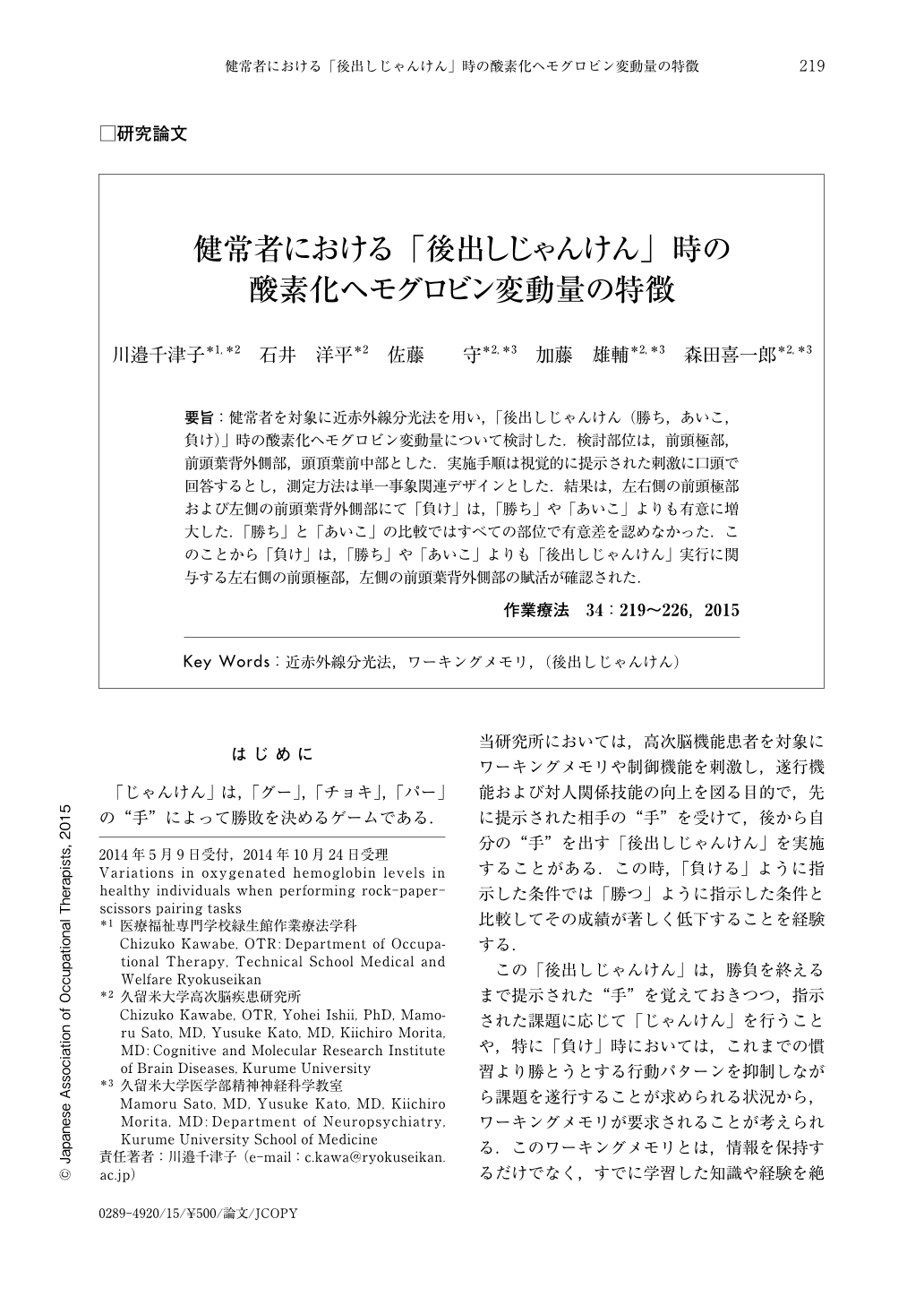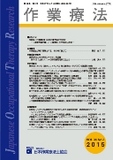Japanese
English
- 販売していません
- Abstract 文献概要
- 1ページ目 Look Inside
- 参考文献 Reference
要旨:健常者を対象に近赤外線分光法を用い,「後出しじゃんけん(勝ち,あいこ,負け)」時の酸素化ヘモグロビン変動量について検討した.検討部位は,前頭極部,前頭葉背外側部,頭頂葉前中部とした.実施手順は視覚的に提示された刺激に口頭で回答するとし,測定方法は単一事象関連デザインとした.結果は,左右側の前頭極部および左側の前頭葉背外側部にて「負け」は,「勝ち」や「あいこ」よりも有意に増大した.「勝ち」と「あいこ」の比較ではすべての部位で有意差を認めなかった.このことから「負け」は,「勝ち」や「あいこ」よりも「後出しじゃんけん」実行に関与する左右側の前頭極部,左側の前頭葉背外側部の賦活が確認された.
This study examined variations in oxygenated hemoglobin levels in healthy individuals when performing rock-paper-scissors pairing tasks (win, draw, and lose), using near-infrared spectroscopy in the frontal pole, dorsolateral region of the frontal lobe, and anterocentral region of the parietal lobe. Measurements were performed, adopting a single event-related design, while visually presenting task patterns for oral responses. The oxygenated hemoglobin levels markedly increased in the left and right frontal poles and left dorsolateral region of the frontal lobe in “lose” compared to “win” and “draw”. On comparison between “win” and “draw”, no significant differences were observed in any region. These results confirm that the task pattern “lose” activates the left and right frontal poles and left dorsolateral region of the frontal lobe, which is responsible for the implementation of rock-paper-scissors pairing tasks, more markedly than “win” and “draw”.

Copyright © 2015, Japanese Association of Occupational Therapists. All rights reserved.


